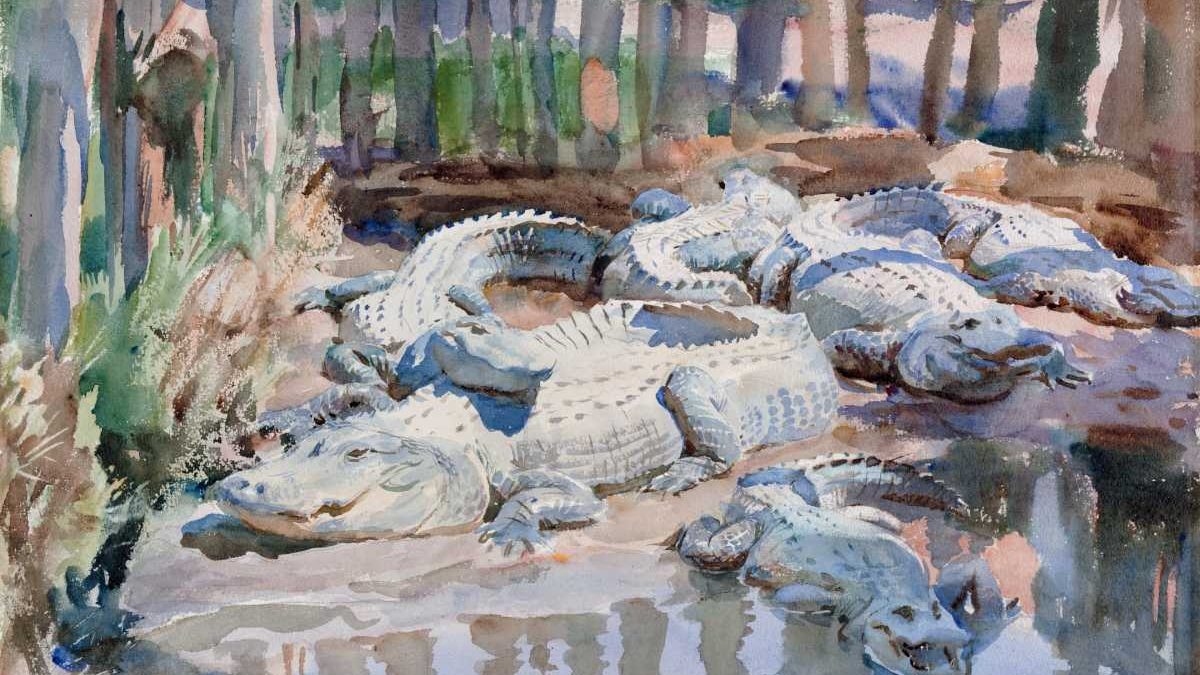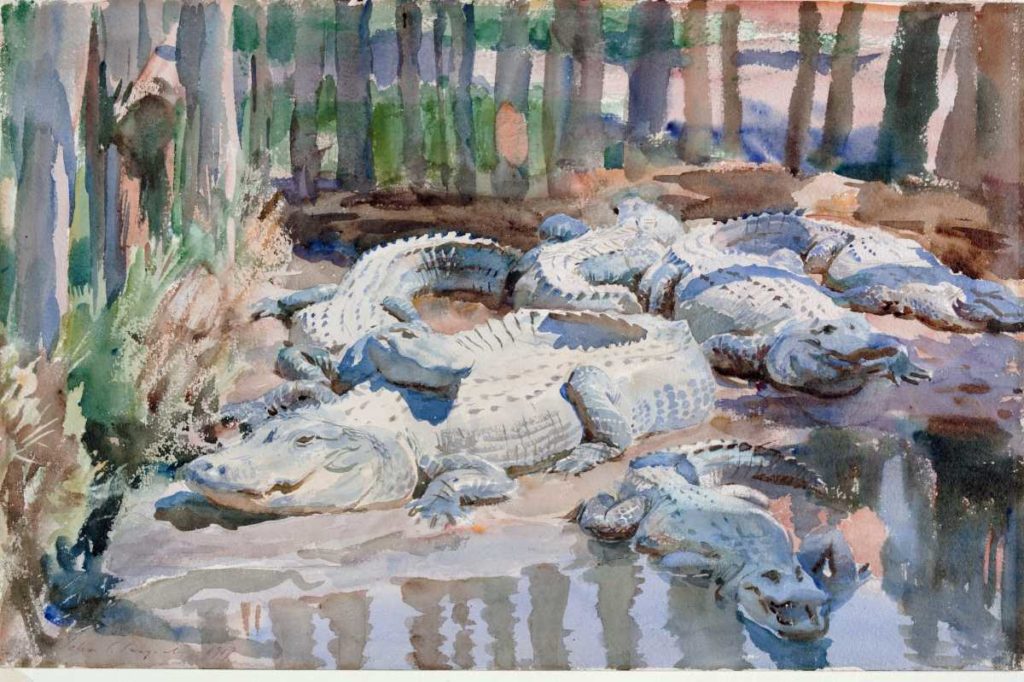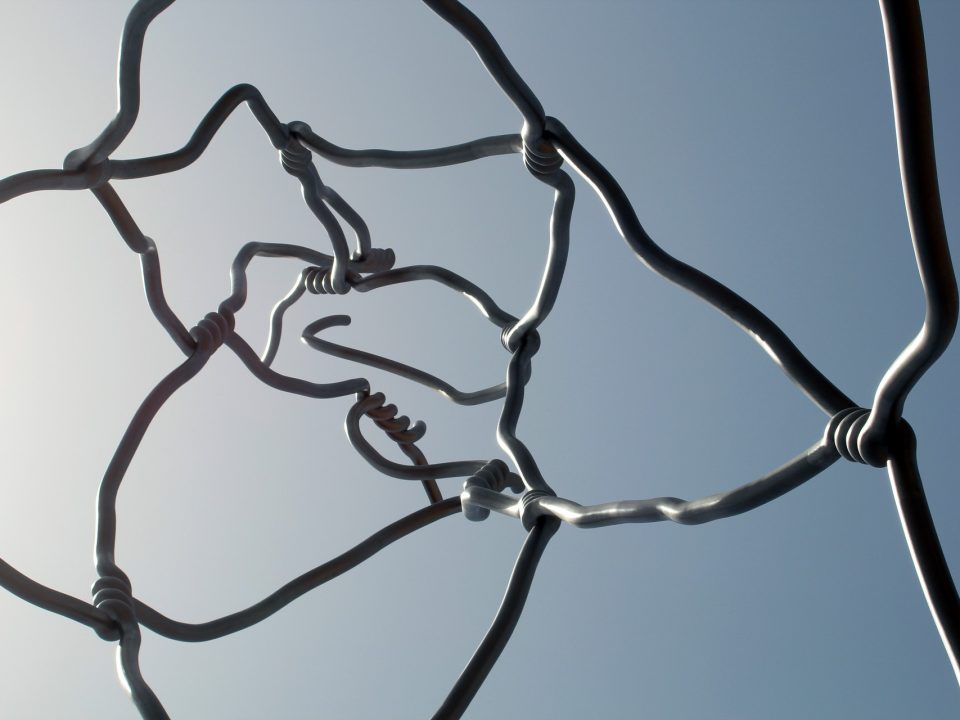Blockbuster Watercolor Exhibit Comes to Philadelphia

Unless you are an art student or artist yourself, you probably haven’t given much thought to the medium of watercolor. Like most kids, you probably had a Crayola paint kit that you dabbed at with a wet brush and made primary-hued masterpieces for Mom to hang on the fridge.

“Muddy Alligators,” 1917. John Singer Sargent, Worcester Art Museum. This is just one of a couple hundred watercolor paintings on exhibit at the Philadelphia Museum of Art. (STEVE BRIGGS)
Long ago, before the Civil War, watercolors were dismissed as the work of young ladies in finishing schools and of housewives making useless handicrafts. It wasn’t until Winslow Homer and John Singer Sargent emerged in the late 1800s that the art community started to take the medium seriously. Gorgeous works were produced, and the public responded appreciatively. The greatest of these works were scattered to private collections, and museums around the country. Thanks to a very diligent curator’s avid interest and connections, however, the Philadelphia Museum of Art is temporarily hosting a couple hundred of the most remarkable watercolors ever made.
“American Watercolor in the Age of Homer and Sargent” opens today at the Museum of Art and runs through May 14th. It is the brainchild of Kathleen A. Foster, whose interest in watercolor as a medium started during her time at Yale in graduate school in the late 1970s. Since then she has become a respected curator, most recently for the Philadelphia Museum of Art. She was able to use her connections across America to gather the paintings, which was no mean feat. Watercolors are notoriously fragile: they are light-sensitive, and the paper breaks down easily. Most curators and collectors wouldn’t entrust their pieces to just anyone. But, for Foster, they made it happen.
The highlight of the exhibit is a hallway lined on each side with paintings by Homer and Sargent, inviting the viewer to make a judgment on who was the better painter. There are also 140 other works by artists both well-known and obscure. Watercolors aren’t as vibrant and openly exciting as oil paintings, but they invite you to look closer and appreciate the quiet genius behind their creation.



